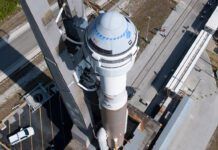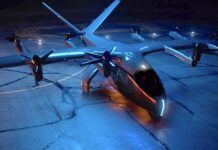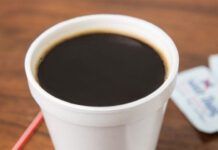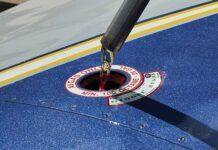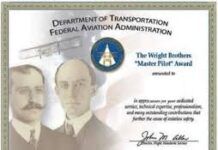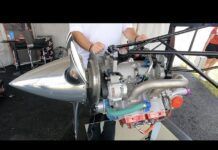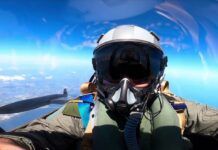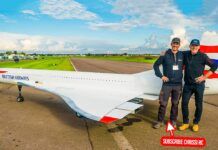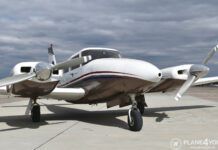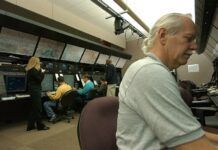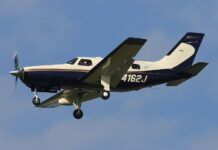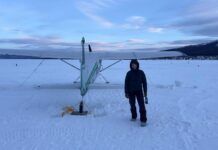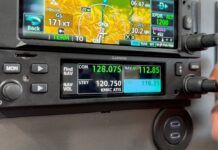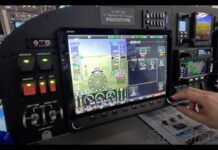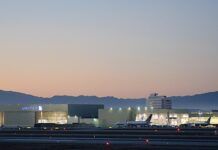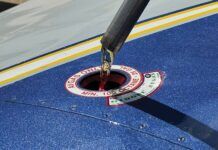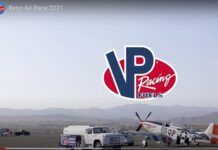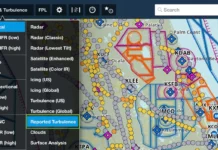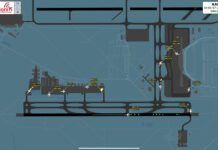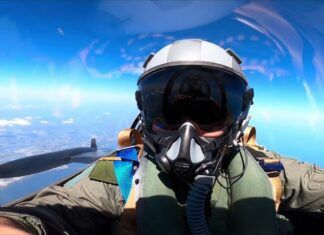
Look at the Pilot’s Operating Handbook (POH) or installed placards on most airplanes and you’ll find a notation about “unusable fuel.” Unusable fuel is that fuel in the tank(s) that is not considered to be accessible for running the engine(s). Fuel tank design philosophy provides a sump area into which heavier-than-fuel water or other contamination will settle that is below the point where fuel flows from the tanks. That way, unless there is a great deal of contamination (that occupies more space than the sump), only “good” fuel will make it to the engine and combustion will continue unabated. The fuel quick-drains you check as part of your preflight inspection are drawing fuel from the bottom of these sumps.

In many airplanes one to three gallons of fuel or more per tank occupies this unusable fuel sump. That fuel itself is then considered “unusable” for flight. It may be that siphoning action from gravity feed or the engine’s fuel pump can draw some of the fuel out of this sump, making it usable despite the unusable designation. Extensive and very careful testing of individual airplanes may be able to determine the actual amount of usable fuel in a specific tank when completely filled. In virtually all airplanes, however, there will be some amount of fuel in each tank that is inaccessible to the engine(s). The amount of unusable fuel in an individual tank is so small that it should not make any difference in your range or endurance planning. So it’s best to consider POH values for unusable fuel to be accurate, and not to count on it to help you make it to destination.
Fuel Starvation
There are other situations when fuel in the tanks, even above the sump level, become unusable in flight. Before you scoff, consider that fuel starvation — an engine failure resulting when fuel is available somewhere on board the airplane but for some reason does not make it to the engine — is responsible for as much as 40% of all engine failures according to some researchers. Removing cases when the pilot selects an empty fuel tank and does not restore fuel flow before an unscheduled landing, there are other scenarios that can lead to an “unusable fuel” state and engine failure:
- Slips With Low Fuel Levels: As long as the airplane is in coordinated flight, fuel will flow normally from the tanks into the fuel delivery system. In other than straight-and-level attitudes, centripetal force will replace gravity to force fuel “down” relative to the airplane. But if aileron and rudder are not coordinated, forces acting on the airplane may pull fuel away from the fuel lines. This unporting of fuel can cause fuel starvation and engine stoppage. Obviously the risk is greatest when fuel levels are low. Fuel unporting is most commonly seen in a slip when landing into a crosswind when the pilot has inadvertently selected the “downhill” fuel tank (see figure below), or — if turning steeply immediately after takeoff or in a go-around — the pilot is not careful to maintain rudder coordination. The “fix” is to keep the ball centered with coordinated use of aileron and rudder, so that “down” for the fuel is toward the bottom of the tanks and the fuel lines, and to select the “uphill” tank when planning a slip to landing.
- Turning-Type Takeoffs: Another low-fuel unporting “gotcha” happens if you make a fast turn onto the runway for takeoff and fuel sloshes toward the outboard end of the tank (see figure). A fast turn on the ground will naturally be uncoordinated (you’re moving in two, not three, dimensions before takeoff), and again the risk is greater with less fuel in the tanks. Some airplanes have baffles in the tanks to inhibit “sloshing,” but it’s still a good idea to get aligned with the runway completely before adding power for takeoff. Not only does this avoid the fuel unporting issue, it also puts much less side-load on your landing gear.

Three types of low-fuel fuel-starvation events: (Top) Slipping on the downhill tank; (Middle) “Turning-type” takeoff; and (Bottom) Unusable fuel.
The ultimate fix for these fuel-unporting scenarios is a fuel system that draws fuel from both tanks simultaneously. For some reason this design philosophy is almost completely limited to Cessna single-engine airplanes. The rest of us need to remember the threat of unusable fuel from unporting.
Vent Action
All fuel tank systems may potentially develop unusable fuel if there are problems with fuel vents. Fuel tanks are vented to the atmosphere so that, as fuel is drawn out, air is drawn in. This keeps the tank pressurized and provides a positive force to permit fuel to flow. If a fuel vent is plugged with dirt, bugs, airplane wax, ice or other obstructions, it may not be possible to draw fuel from that tank, even if it is full of fuel. Rubber bladder-type fuel tanks (as opposed to fiberglass or metal tanks) may bunch up and trap large amounts of fuel away from the engine; even fiberglass or metal tanks may deform and collapse under the suction of fuel and make remaining fuel unusable.Some models of airplane have a fuel vent in the form of a stick or probe that extends beneath or above the wing and into the slipstream. If these types of vents are broken off or spun around so that the opening is anything other than straight into the relative wind, air flow may create suction instead of pressure in the vent lines. This suction can resist fuel draw and make some or all of the fuel in that tank unusable, or it may actually pull fuel out of the tank through the vent and dump it overboard.To avoid fuel venting problems, check all fuel vents for obstructions and vent orientation before flight.
Fuel Caps
Loose or leaky fuel caps can create suction that, like a misaligned vent, can create pockets of unusable fuel in bladder-type tanks or inhibit fuel flow from the tank. Suction created in the low-pressure area atop the wing can even draw fuel through the filler port, draining the tank in flight. Avoid fuel cap-related unusable fuel by personally ensuring fuel caps are secure before every flight, even if you’ve not fueled on this landing or it was serviced by a trusted fueler or mechanic.
Auxiliary Fuel
Many airplane types have main and auxiliary fuel tanks. In every model I’m familiar with, the POH calls for fuel selectors to be moved to the fullest main tank position for everything but straight-and-level flight. Auxiliary fuel tanks often are located, plumbed or vented such that fuel flow may become interrupted in high angles of attack. To avoid making all your fuel “unusable” for takeoff or landing, following the POH’s guidance and double-check positions before takeoff, climbs, descents, and when entering the approach or traffic pattern.
Vapor Lock
Vapor lock, or an interruption in fuel flow caused by air in the fuel lines, often results when a fuel tank is drained completely and the fuel pump is allowed to draw air into the lines. In some cases fixing a vapor lock is easy (switching to a fuel-filled tank and running a boost pump), but in others it make take a complicated purging process and may not even be possible until you’re on the ground. To avoid the dangerous potential for vapor lock, avoid running a fuel tank completely dry in flight.
Crossfeed

350
A fuel starvation event fairly common in multiengine airplanes occurs when one engine is run in crossfeed. Most twin-engine airplanes normally run the left engine with fuel from the left wing, and the right engine from fuel in the right wing. As a means of balancing the aircraft on extended single-engine operation (in the event of an in-flight engine failure), twin-engine airplanes usually have crossfeed lines so the left engine can run from right-wing fuel and vice versa.If both engines are running, it’s possible to be running them both from the same tank, one engine feeding normally and the other running in crossfeed. This is not a routine configuration, but every now and then the NTSB publishes an accident report where this has created unusable fuel (in that configuration) and both engines quit, usually at some critical point such as takeoff or landing. To avoid this type of mishap, ensure that fuel selectors are set properly for takeoff, cruise and landing.
Unusable Fuel
Make sure all the fuel you have on board is usable to your engine(s):
- Observe all fuel system limitations.
- Maintain rudder coordination in flight.
- If you must fly uncoordinated (such as a slip to landing), do so with plenty of fuel in the tanks, and select the uphill tank unless your fuel selector has a “both” position.
- Check vents for obstructions and orientation before flight.
- Check fuel caps for security and leaks before flight.
- Avoid running a fuel tank completely dry to avoid vapor lock.
Fly safe, and have fun!


